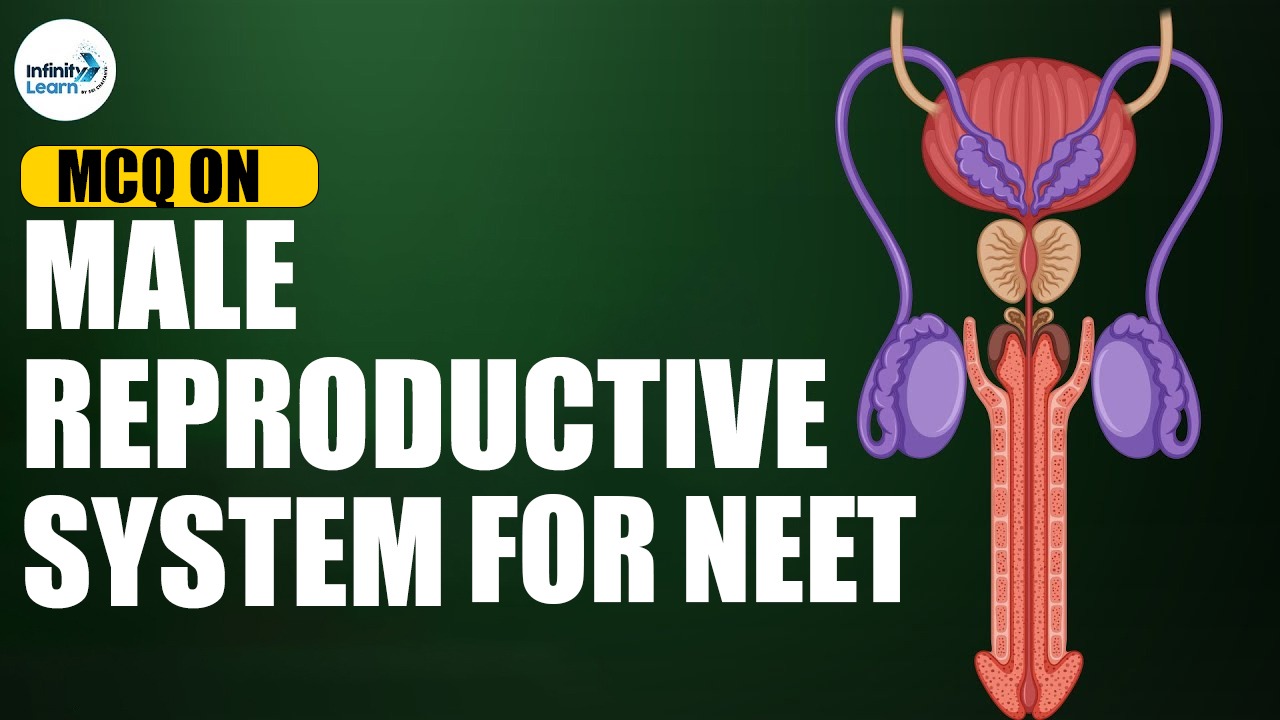The male reproductive system consists of various parts, including the testes, scrotum, spermatic ducts, male accessory glands, and the penis. These organs work together to create sperm, which is the male reproductive cell, as well as male sex hormones and other substances found in semen.
Both the penis and urethra are involved in both the reproductive and urinary systems. The rest of the male reproductive system includes the scrotum, seminal vesicles, vas deferens, testicles (testes), and prostate.
The penis has a base that connects to the pelvic bones and lower abdomen, and the visible part is called the shaft. It also has a cone-shaped tip, and the opening of the urethra is located there. The urethra serves as a pathway for both semen and urine. The base of the penis is known as the Corona.

Also Check: NEET 2024 Rank Predictor Tool
Male Reproductive System MCQ for NEET
Ques 1. These cells of the testes secrete testosterone
1. Sertoli cells
2. secondary spermatocytes
3. Cells of Leydig or interstitial cells
4. cells of germinal epithelium
Answer: Cells of Leydig or interstitial cells
Ques 2. In man, Cryptorchidism is the condition when
1. testis degenerates in the scrotum
2. there are two testes in each scrotum
3. testes do not descent into the scrotum
4. testis enlarges in the scrotum
Answer: testes do not descent into the scrotum
Ques 3. Which of these is an accessory reproductive gland in male mammals
1. Inguinal gland
2. Gastric gland
3. Mushroom-shaped gland
4. Prostate gland
Answer: Prostate gland
Ques 4. The elastic tissue which connects the cauda epididymis to the scrotal sac is
1. Gubernaculum
2. Scrotal ligament
3. Caput epididymis
4. Tendinous cord
Answer: Gubernaculum
Ques 5. Another name for Bulbourethral gland is
1. Cowper’s gland
2. Prostate gland
3. Perineal gland
4. Meibomian gland
Answer: Cowper’s gland
Ques 6. The seminiferous tubules of the testis are lined by the germinal epithelium consisting of
1. cells of Sertoli
2. spermatids
3. spermatogonium
4. spermatocytes
Answer: cells of Sertoli
Ques 7. By the contraction of the spermatic cord, the testis of man are not taken to the abdominal cavity due to this structure
1. fat bodies and gubernaculum present over the testis
2. attachment of testis by gubernaculum to the scrotal sac only
3. narrowness of inguinal canal
4. both 2. and 3.
Answer: attachment of testis by gubernaculum to the scrotal sac only
Ques 8. Seminiferous tubules develop central lumen after
1. Prepuberal time
2. Old age
3. Birth
4. Puberty
Answer: Puberty
Ques 9. There is a connective tissue cord extending between the testis and abdominal wall known as
1. testis cord
2. gubernaculum
3. mesenteric cord
4. spermatic cord
Answer: spermatic cord
Ques 10. There are some special types of cells present in the seminiferous tubules known as Sertoli cells which are
1. somatic cells
2. protective cells
3. germinal cells
4. reproductive cells
Answer: protective cells






